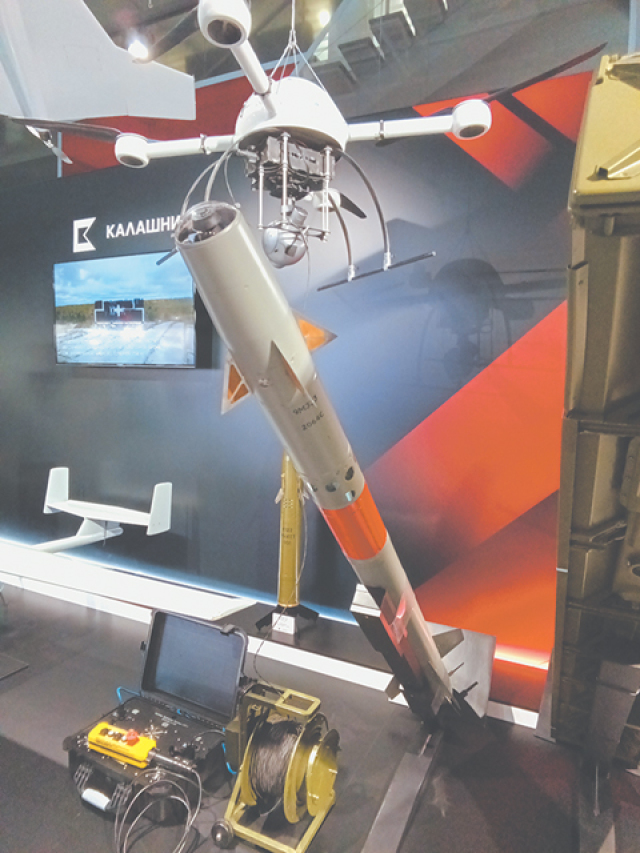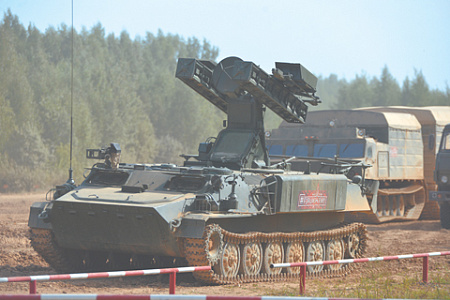New products have increased the capabilities of the Strela-10M3 anti-aircraft system
The decision made public in 2018 by the Ministry of Defense of the Russian Federation (MO RF) and Rostec Corporation to resume serial production of the 9M333 missile at the plant recently erected in the city of Kovrov caused bewilderment of specialists. The fact is that the product was developed and passed firing tests at the end of the last century, after which it was supplied to the troops for use in the Strela-10M3 type anti-aircraft missile system (ZRS) from the air defense of the Ground Forces ( Strela of New power, 17.02.22) for a few years. Why after a quarter of a century to put an outdated product back on stream? Especially when its developer by that time had completed testing of a much more advanced Sosna-R missile for a substantially updated combat vehicle of the same complex in the Strela-10ML modification? Also known under the names "Pine", "Bagulnik", "Birdman" and "Palm" (versions of essentially the same complex for various types of the Armed Forces), the new system was also put into production at that time (" Omnivorous Birdman ", HBO from 02/24/12). Corvettes of the "class" were exported to VietnamCheetah", assembled at the shipyard in Zelenodolsk in a complete set with a marine version of the "Palm" firing missiles "Pine-R". Rostec was forced to explain that, they say, 9M333 is also needed – to replenish the depleted arsenals of weapons of destruction to the Strela-10M combat vehicles of old modifications released in the Soviet years. Since 2020, products marked "9M333" have been regularly demonstrated at the international military-technical forums "Army". This gave specialists the opportunity to assess how different the products of the old and new releases are. Judging by the appearance, layout and size, the products looked almost identical.

Rocket 9M333 in the pavilion of the Kalashnikov concern in Kubinka near Moscow. Photo by Vladimir Karnozov
A message from RIA Novosti on September 2 helped to dispel such an idea. It claims that the Russian Army uses "new 9M333 anti-aircraft guided missiles in the zone of a special military operation (SVO), which do not respond to heat traps used by the Ukrainian Air Force (Air Force)." An unnamed interlocutor of the agency explained (quote): "The experience of using the 9M333 in the zone of its own shows that the missile is very well built up from interference, in particular from heat traps, bypassing them and hitting the target. In eight cases out of ten, the missile hits the target when the enemy sets heat traps by aircraft, that is, in 80% of cases. This is an excellent performance indicator." If the information given is true, then the real combat effectiveness of the Strela-10M system (and it had previously fought in dozens of armed conflicts) has increased significantly. According to the source, who was not named by name, the new-release missiles have a multispectral homing head, which allows distinguishing the true target from a false thermal one. Thanks to this, the Russian "arrows" are successfully fighting enemy aircraft. There are cases of damage to Su-25 attack aircraft, Mi-8 and Mi-24 helicopters, as well as unmanned aerial vehicles (UAVs) with dimensions from one to one and a half meters. Note that the 9M37 and 9M37M missiles produced in Soviet times, which were bundled with the Strela-10 air defense system of early modifications, simply did not notice such compact drones, serenely flying past them without undermining the warhead – in a word, "went to milk". The situation improved somewhat (although it was not completely resolved) with the appearance of the 9M333 original appearance. And it was completely solved only with the release of products manufactured by the plant in Kovrov.
As the specialists of the Kalashnikov concern explained, the 9M333 product is designed to defeat low-flying aircraft and helicopters, as well as UAVs and cruise missiles at any time of the year in conditions of the use of dropable, parachuted and modulated organized optical interference.
It is known that jamming and releasing false targets with a thermal field, like a real aircraft, is a standard way for combat aircraft and helicopters to protect themselves from anti–aircraft missiles with an infrared homing head. Among other things, heat traps are in use, which are cartridges with a pyrotechnic charge fired from special launchers placed on airplanes and helicopters. They create a source of thermal radiation with a power exceeding the corresponding parameter of the carrier device. When properly set, such traps distract anti-aircraft missiles and thus save their aircraft or helicopter from defeat.
Thanks to the RIA Novosti report of September 2, it turned out that the 9M333 rocket is not subject to such deception. The homing head (homing) with three modes of operation helps to avoid entrapment: photo contrast, infrared and interference. This is the main advantage of the 9M333 over older products of this kind. Now the Strela-10M3 system, even without any modification of the combat vehicle, is capable of reliably hitting the above-mentioned targets flying at speeds up to 680 m/s and altitudes from 10 to 3500 m. The Strela-10M becomes even more deadly after upgrading to a variant with an additional suffix "N" ("night") by introducing a thermal imager into the air target detection equipment.

